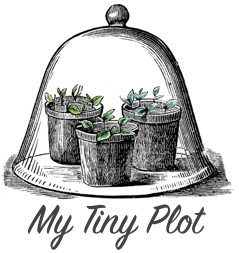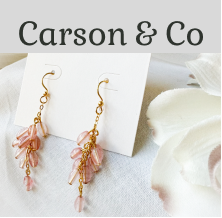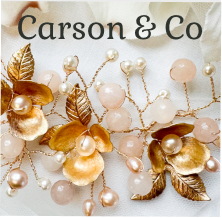Are Heritage Veg Worth It?

I recently received my copy of Which? Gardening and there was a fascinating feature in it about the differences between heritage vegetables (ie those older varieties that would die out if not perserved) and newer hybrid varieties.
Which? are famed for their thorough testing and they certainly seemed to have tested some obvious varieties of each type of veg. The old and new varieties were grown under identical conditions, in the West Country and each were tested for yield, looks and taste. I won’t recount the whole feature here but the headline results were as follows:
-
Calabrese
Old Variety – Green Sprouting
New Variety – Ironman F1
Winner = New variety, with excellent flavour
Tomato
Old Variety – Brandywine
New Variety – Country Taste F1
Winner = Old variety, for flavour
Parsnip
Old Variety – Tender and True
New Variety – Picador F1
Winner = New variety, for all round quality
Carrot
Old Variety – St Valery
New Variety – Infinity
Winner = Old variety, for flavour
Lettuce
Old Variety – Parris Island
New Variety – Chartwell
Winner = Old variety, for taste
Dwarf French Beans
Old Variety – Triomphe de Farcy
New Variety – Speedy
Winner = New variety, for supermarket-quality beans (not sure what that means, straight?)
Beetroot
Old Variety – Detroit Globe
New Variety – Pablo F1
Winner = Old variety, for taste and yield, New variety for looks
Sweetcorn
Old Variety – Golden Bantam
New Variety – Lark F1
Winner = New variety for sweetness
Courgette
Old Variety – All Green Bush
New Variety – Endurance F1
Winner = New variety for taste and good looks
Whether you agree with using F1 hybrid varieties or not, it’s useful to see where their strengths are and where you really don’t need to use them. Especially, since F1’s tend to be very expensive. For my part I’ll always be choosing to grow something called, ‘Triomphe de Farcy’ over its F1 rival ‘Speedy’. I mean, who wouldn’t?
Which? don’t seem to have put the article online yet, otherwise I would link to it.
 My Tiny Plot
My Tiny Plot



Interesting post… Didn’t know Which? published a report on veg! Think I’d be more inclined to trust RHS for seed testing but handy to have another viewpoint. Thanks for sharing.
Just read that article myself. I can’t help but choose the heritage varieties. I know that I won’t save seed from everything .. but I love knowing that I CAN and that they’ll come ‘true’… and I love the thought of them being grown by people back down the generations, sometimes for over 100 years!
I must say we generally use heritage seed but without any reason other than we feel secure in the..er…well heritageness of them. These were the foods of our ancestors.
Ben
http://www.higgledygarden.com
Fantastic, bookmarked for next year’s seed planning!
Interesting, shows that the new varieties are not always better despite the money that goes into producing them.
The big plus of heritage/heirloom varieties of course is the seed saving possibilities – not an option with the hybrids as they don’t stay true to type.
Interesting article. So basically the jury is out on this debate then?! Difficult to compare seeds though I’d have thought unless you grow every single lettuce, courgette, tomato, etc. How did they chose the modern varieties? How do you rate things for taste and appearance without being subjective? And saying something is better because it produces ‘supermarket quality’ just makes me want to grow the other one ;>)
I’ve been wondering about all the expense of buying F1 hybrid seeds. I don’t think it is worth the money for the most part. There are times however, when they come in useful like when they are more disease resistant – saves having to spray and lose crops to disease.
Problems with F1’s are that they all tend to mature at the same time.
Heritage seeds are more variable.
Google “the real seed company” for info on saving seeds and F1 v natural.
Good source of seeds as well. My carrots this year (5 varieties) have been superb.
Very interesting, might nip out and see if there are any copies of that magazine left.
Interesting, but if different varieties had been chosen would there have been different results?
There’s pros and cons to both as some of your previous commenters have pointed out. Personally I’m glad the heritage varieties are being retained because who knows when their characteristics are going to come in handy?
And yes, supermarket quality means straight. And probably good for transportation without too much damage too, crops at the same time etc. etc. *sigh*
Hi – Thanks for the great mention of the report. Unfortunately the magazine is subscription only, and no available on newstands. But on this occasion if any of the people who have commented want a copy of the report i am happy to email it over to them.
tried Brandywine tomatos this year: found them a bit of a dramaqueen. tend to wilt all over the place while the other (6) varieties I grew were fine. the brandywine also didn’t ripen (outdoors) in time before the frosts, while my tamina, gardeners delight, hundreds and thousands, and tigerallas went great guns.
mind you, I also grew the supposedly blight resistant ferline F1 variety… which got blight. but at least the 6 plants yielded a couple of pounds of fruit before then.
which only proves, as the other poster says, that with so many varieties, you can never just choose Heritage vs F1
oh – and yes, rebecca: it would be great if you could email me a copy please! thank you!!
Mrs Murdock – I’ve grown Ferline for the last two years and while they have resisted the blight for me I’ve been a bit disappointed with the flavour. I might risk it and grow a standard or even heritage variety next year
hi there – thanks for the F1 vs Heritage tip-off. As you say, the choice when it comes to names is obvious, although I have a vague memory of an F1 carrot called Trevor, which made me smile and might just make me hand over my cash.
Yep I’ve also found Ferline to be lacking in flavour and as for the Sarpo blight resistant spuds, don’t get me started!
I’d love it if you could email me a copy of the report, I want to plant a heritage seed allotment next year but would love some advice on what the weak points of the main seed varieties are.
One reason I don’t use hybrid seed is that I have read (John Jeavons I think) that they take more nutrient out of the soil than is sustainable. ie you get that extra yield at a cost.
fascinating, thanks for posting! i’m planning to go the heritage side in future, i too adore the history of a heritage seed, and the potential for seed saving. tried & true!
someone mentioned the real seed company – any other suggestions? thomas eddy, is it?
Pingback: Frugal, cooking, growing and making link love | The Really Good Life